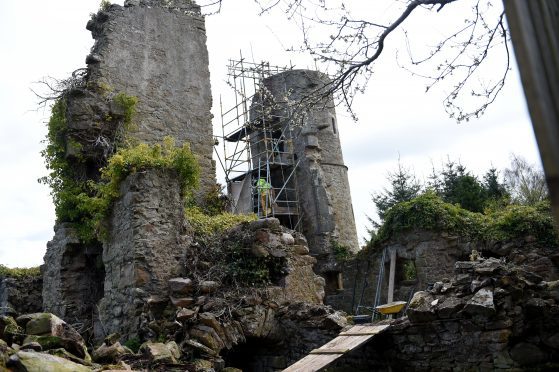Kinloss Abbey was founded in 1150 by King David I and has been linked with some of history’s most famous figures.
Upon completion, it was colonised by Cistercian monks from Melrose Abbey, and it became one of the largest and wealthiest Cistercian houses in Scotland.
In 1312, Robert The Bruce granted the abbey the fishing rights to the River Findhorn.
It was extended later that century following a fire.
Scandal hit the venue in 1492, when monk William Butler murdered a young boy there, by forcefully striking him in a fit of rage.
He was sent to Rome to receive his punishment from the Pope and, despite his colleagues offering pleas for his absolution, he was never seen again.
Kinloss Abbey was forced into closure by the Reformation of Parliament in 1560, and much of its stonework was eventually sold to Oliver Cromwell in 1650 for the construction of the citadel in Inverness.
A Moray architect recently completed a report into the “decades of decay” which left the Abbot’s House tower on the brink of collapse last year.
Andrew Wright believes more detailed research is needed into the parts of the house that have survived for centuries.
He said the steeple at the Abbey fell in 1574, causing the church building “considerable” damage.
He added: “The dismantling of the monuments could have continued for almost two centuries, as materials were used as valuable building resources.
“The east wall collapsed dramatically in 1981, scattering stones across the site.
“At one stage, the ruins of the Abbey and the Abbot’s House had disappeared under a shroud of ivy growth, bringing the risk of damage to masonry.”
